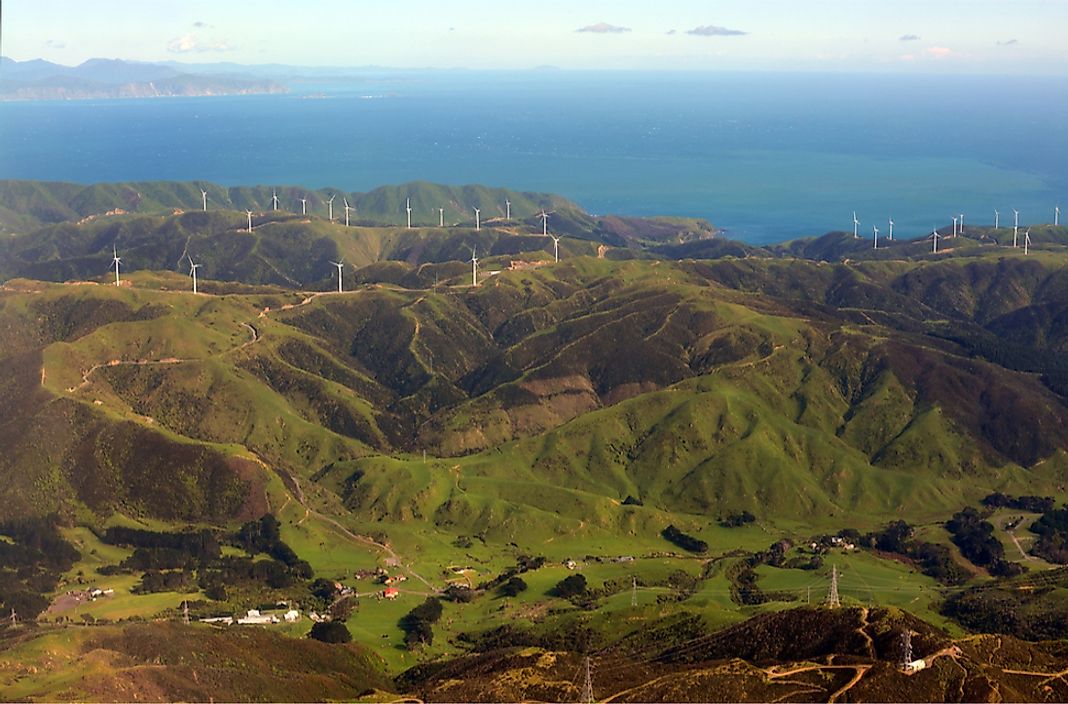What Is The Windiest City in the World?

Wellington in New Zealand is ranked as the world's windiest city. Inhabitants of the city have learned to cope with the winds, and air pollution in Wellington is minimal due to the winds. Each year, the city experiences an average of 22 days of over 74 km/hr and 173 days above 59 km/hr of wind speed. Wellington is often called "Windy Wellington" due to its sustained winds.
Geography of the World's Windiest City
Wellington sits at the southwestern edge of New Zealand's North Island and is situated on Cook Strait, which separates the North and the South Islands. The Kaikoura Ranges can be seen on a clear day to the south across Cook Strait, and the Kapiti Coast is visible to the north. The Rimutaka Range separates the city from the wine region of Wairarapa to the east. Wellington is regarded as the southernmost capital in the world due to its latitude of 41°17'20"S. The city is located the farthest away from another country's capital city, making it the most remote capital city. Wellington has limited land between its hills and harbor, a factor which has encouraged its dense population and facilitated the construction of suburban towns. Its average wind speed of 17 mph or 27 km/h has earned it the name "Windy Wellington." The Wellington region includes 190 square miles of regional forests and parks.
Why Is Wellington so Windy?
The winds blowing over New Zealand follow a westerly direction from South America. The winds gather speed as they squeeze through the Cook Strait, forming a "river of wind" averaging 16.6mph. The strongest gust in the North Island was recorded at 154mph in 1952. One of the country's strong winds was recorded atop Mt. Kaukau in Wellington at 202 km/h.
Benefits
Wellington, and New Zealand in general, benefit immensely from the abundant wind power. The city has invested in 62 turbines scattered around the city's surrounding hills. New Zealand has no government energy subsidies, which allows wind power to compete with energy sources such as fossil fuels. The West Wind farm, which is operated by Meridian Energy, accounts for 143 MW electricity output. Wellington attracts sailors, kite-surfers, and windsurfers, who troop to the city to ride the vortex. Enthusiasts can be seen in large numbers during spring, making Wellington one of the country's top destinations. Another advantage is the lack of air pollution, as fumes are constantly blown away from the city.
Disadvantages
Strong winds have been blamed for several adverse consequences. In 2011, for example, 6 of the 62 turbines in the West Wind wind farm suffered premature bearing failures. The winds have resulted in damage to power lines. Nearly 2,500 residents suffered power shortages in May 2009. Flights can also be delayed when the winds get particularly strong. In cases where the local government expects extreme conditions, directives are relayed to drivers and motorcyclists to observe extra caution or even delay travel where possible especially if they are using open roads. Strong winds in Wellington have been known to topple power poles, trees, and traffic lines and also cause damage to homes. The city has had to adopt building regulations to mitigate the windy conditions.











